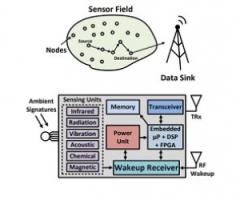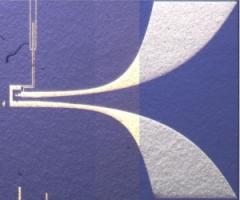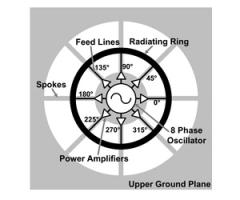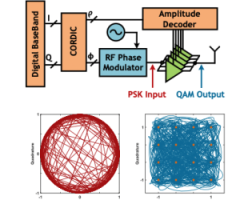Research Areas
The Integrated Electromagnetics, Circuits, and Systems (IECS) Lab, within the Charles L. Brown Department of Electrical and Computer Engineering at the University of Virginia, is led by Professor Steven M. Bowers. Our research focuses include mm-wave and THz systems, RFICs, and high-frequency mixed signal circuits with applications in biomedical imaging, security and communication. We are always looking for ways to expand the application space of high-frequency systems through continued collaboration with other groups and researchers in different fields and even in different universities. By utilizing cutting-edge tools and equipment, we strive to achieve improved performances by furthering the integration of systems onto a single semiconductor substrate, embodying the tightly interconnected co-design philosophy necessary for designing optimal solutions.
Research Areas
Nanowatt-Level Wakeup Receivers
Ultra-low Power Electronics for IoT
Chip-scale sensor nodes that consume ultralow power are essential components for attaining the vision of the Internet of Things. A wakeup receiver is a critical block in the node that can remain active while all power-intensive modules are turned off, in order to save energy for useful processing of information.
RF Photonics
Radio-over-Fiber (RoF) for high-bandwidth optical communication
Due to the growing number of internet-connected devices and increasing demands for high definition streaming, high-bandwidth interconnects are required in order to provide fast datarates. One approach to meeting this demand is utilizing high-bandwidth optical fiber communications. Optical fiber communications offer a variety of benefits, including low attenuation and greater transmission distances, making it ideal for long-haul communication.
Multi-Port Driven Radiators
Efficient power combining at THz frequencies
At THz frequencies, losses due to passive structures dominate the performance of mm-wave and THz power sources, making impedance matching and power combining very lossy. By using a MPD antenna, and using a hybrid design approach where both the electromagnetic antenna and driver circuitry design are done together, the performance can be greatly improved.
High-Efficiency CMOS Digital Transmitters
There is a tremendous demand for high efficiency transmitters operating in the increasingly congested sub-7 GHz spectrum to meet the growing needs of IoT. It is becoming more and more difficult for the traditional quadrature transmitter architecture to meet this demand as it is bulky and power hungry. A CMOS digital transmitter aims to provide the needed solution by offering a compact, efficient, and scalable design.



